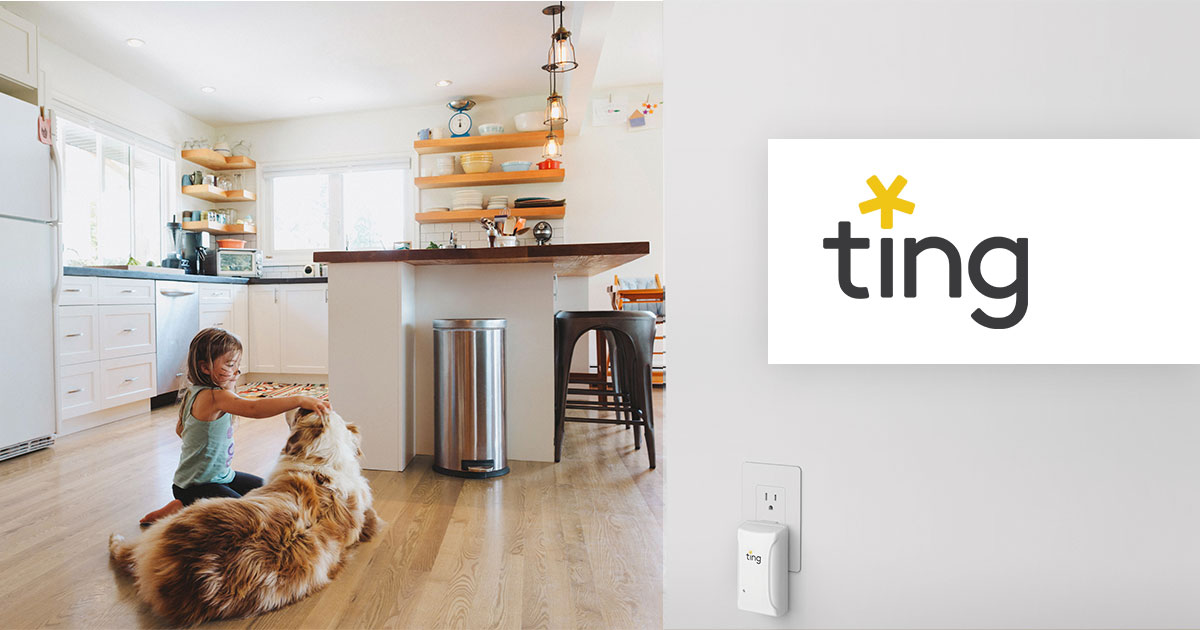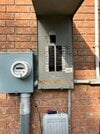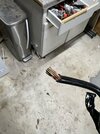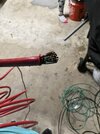Welcome to Tesla Motors Club
Discuss Tesla's Model S, Model 3, Model X, Model Y, Cybertruck, Roadster and More.
Register
Install the app
How to install the app on iOS
You can install our site as a web app on your iOS device by utilizing the Add to Home Screen feature in Safari. Please see this thread for more details on this.
Note: This feature may not be available in some browsers.
-
Want to remove ads? Register an account and login to see fewer ads, and become a Supporting Member to remove almost all ads.
You are using an out of date browser. It may not display this or other websites correctly.
You should upgrade or use an alternative browser.
You should upgrade or use an alternative browser.
Wall Charger tripping adjacent Breaker
- Thread starter tewest86
- Start date
I just checked and no strands were missing. Only imperfections are where it was clamped down.So just one last attempt to explain what could have been the problem, did you look closely at the area of stripped insulation, most nicks occur at the line where the tool used to strip the wire comes in contact right at the edge of the stripped insulation, I know im probably beating a dead horse here but I just cannot figure out what would have caused this?
In this low res photo I cropped of a site that explains how to properly strip heavy gauge wire it appears that almost every outside strand has been nicked deeply on the white insulated wire and the red one looks to be missing some strands, this is the type of problem that can cause overheating by limiting the ampacity of the wire, I'm not saying you have this I just cannot figure out anything else!
Tomorrow.When are they coming out to put in the new panel?
Attachments
thefisch
Member
I've read the concern is heat related, not a code violation. But you also need conduit to protect the wire where potentially exposed such as leaving a panel outside. For a short run, they just need to make sure the conduit is large enough.I do have one other question. I read here that Romex can’t be installed in conduit. I just remembered that ever home in my area has the panel on the outside with a few feet of conduit taking all the romex into the house.
Looking at your photo, I would assume that most of the circuits are leaving the backside of the panel into the house. The conduit connected to the panel on the right and bottom in the photo are too small.
The bottom conduit houses the 3 wires for the wall charger. The right conduit has a boat load of wires that feed the house ( 40 amp oven and a bunch of 20 amp feeds). Then there is a back cut that feeds the rest of the wires. The right conduit is original and mirrors the majority of houses built here between 1990 and 2000.I've read the concern is heat related, not a code violation. But you also need conduit to protect the wire where potentially exposed such as leaving a panel outside. For a short run, they just need to make sure the conduit is large enough.
Looking at your photo, I would assume that most of the circuits are leaving the backside of the panel into the house. The conduit connected to the panel on the right and bottom in the photo are too small.
thefisch
Member
Boy that right conduit has a 90 turn too. I read the rule of thumb is no more than 40% of the diameter of the conduit filled with wire, but you're better off talking to local electricians who know those houses.The bottom conduit houses the 3 wires for the wall charger. The right conduit has a boat load of wires that feed the house ( 40 amp oven and a bunch of 20 amp feeds). Then there is a back cut that feeds the rest of the wires. The right conduit is original and mirrors the majority of houses built here between 1990 and 2000.
Did the electrician say anything about the conduit or pulling a permit?
That's where living in Texas is different. We called and my city doesn't require a permit to change out a panel. You only need a permit when establishing new service. All work has to follow NEC 2020.Boy that right conduit has a 90 turn too. I read the rule of thumb is no more than 40% of the diameter of the conduit filled with wire, but you're better off talking to local electricians who know those houses.
Did the electrician say anything about the conduit or pulling a permit?
GreenCoffee
Member
Plus you probably have some reasonable electrical rate of 8 to 10 cents a kWh, not like this crap in CA that peaks at 62 cents!That's where living in Texas is different. We called and my city doesn't require a permit to change out a panel. You only need a permit when establishing new service. All work has to follow NEC 2020.
Midnightsun
Active Member
Had the same thing happen to me albeit on a 20a, 240 volt breaker that was tied into some baseboard heaters. The culprit was a poor connection between the main buss bar of the panel and the breaker which caused arcing on the portion where the breaker was connected which looks like the same as where yours failed. The oddity here was this was after 20 years of service and out of the blue there was a electrical burning smell in the basement where the panel is located. Lucked out and was able to replace the main bus bar in the panel along with a new breaker. Went ahead and double checked the torque of every breaker in the panel to make sure they were all tight. We were lucky as this happened a few hours before leaving on vacation to Europe for a couple of weeks.
My best guess is due to the corrosion of being outdoors for so many years the new breaker did not have a clean contact where it connects to the buss bar from oxidation which caused the failure.
My best guess is due to the corrosion of being outdoors for so many years the new breaker did not have a clean contact where it connects to the buss bar from oxidation which caused the failure.
Last edited:
It was at 7 cents. My new contract is at 12 cents.Plus you probably have some reasonable electrical rate of 8 to 10 cents a kWh, not like this crap in CA that peaks at 62 cents!
With the old panel off, we were able to inspect more. Looks like the conduit on the right only contain wire for upstairs a/c and 2 20 amp circuits. The rest of the wires ran through the back into the house.Boy that right conduit has a 90 turn too. I read the rule of thumb is no more than 40% of the diameter of the conduit filled with wire, but you're better off talking to local electricians who know those houses.
Did the electrician say anything about the conduit or pulling a permit?
thefisch
Member
While I am glad you caught this before your trip and potentially more significant damage, the lifespan of breakers can be affected from constant higher amp draws like the heaters in your situation. No idea about the amp draw of those heaters and if the circuit was close to being overloaded or sized right to begin with or if you had that breaker trip in the past or not or if it was just it's time. But while the timing of the failure was random, that breaker is a likelier candidate for failure compared to your typical breaker use for normal household outlets or lights.Had the same thing happen to me albeit on a 20a, 240 volt breaker that was tied into some baseboard heaters. The culprit was a poor connection between the main buss bar of the panel and the breaker which caused arcing on the portion where the breaker was connected which looks like the same as where yours failed. The oddity here was this was after 20 years of service and out of the blue there was a electrical burning smell in the basement where the panel is located. Lucked out and was able to replace the main bus bar in the panel along with a new breaker. Went ahead and double checked the torque of every breaker in the panel to make sure they were all tight. We were lucky as this happened a few hours before leaving on vacation to Europe for a couple of weeks.
My best guess is due to the corrosion of being outdoors for so many years the new breaker did not have a clean contact where it connects to the buss bar from oxidation which caused the failure.
In the OP's case, the electrician had an opportunity to remove any corrosion from the bus bar and ensure proper contact. Perhaps that wasn't done or perhaps it was and this was just a faulty breaker. Doesn't matter at this point though.
Boy, I thought was doing good at 14 cents. Going up to 16 cents next month unfortunately.It was at 7 cents. My new contract is at 12 cents.
That good to hear. How did the new panel install go? Share any pics if you have them.With the old panel off, we were able to inspect more. Looks like the conduit on the right only contain wire for upstairs a/c and 2 20 amp circuits. The rest of the wires ran through the back into the house.
bo3bdar
Member
Really interesting failure scenario, and super lucky that the GFCI did its job properly and actually notified you of a problem.
Possibly related- there is a newish service I just ran across that has a plug in device that monitors your electricity for stuff like this. I don't know, but I think it would have caught this scenario. It's definitely designed to catch this.
Not a pitch, not trying to sell anything, just something I thought was interesting enough to put in my house. For free, because my insurance pays for the device and the service.

 www.tingfire.com
www.tingfire.com
My house has an old Pacific Electric breaker box, which is considered sub standard enough that it has to be disclosed to buyers. Not recalled, but definitely the cause of numerous fires in the past.
I'm not super concerned, but I wanted to get the Ting monitor to see if my Tesla charging is throwing any warnings. It's the only thing that draws 12 amps for 15 hours. (120V charger)
Possibly related- there is a newish service I just ran across that has a plug in device that monitors your electricity for stuff like this. I don't know, but I think it would have caught this scenario. It's definitely designed to catch this.
Not a pitch, not trying to sell anything, just something I thought was interesting enough to put in my house. For free, because my insurance pays for the device and the service.

Home
Ting helps you prevent the most devastating fires - those that start from hidden electrical faults - with one very smart DIY plug-in device.
My house has an old Pacific Electric breaker box, which is considered sub standard enough that it has to be disclosed to buyers. Not recalled, but definitely the cause of numerous fires in the past.
I'm not super concerned, but I wanted to get the Ting monitor to see if my Tesla charging is throwing any warnings. It's the only thing that draws 12 amps for 15 hours. (120V charger)
Install went well. Not something I want to do for a living. It took about 6 hrs. He gave me some of his times. For example, he like to put the big ticket items ( big energy guzzlers ie wall charger, over,) first on the panel where the power comes in. Then he puts the smaller breakers below. He also likes to big the big breakers with nothing across from them. He have a bigger panel now so not crunched for space. I still have 150 amp service. I’m happy. Wall charger has worked good. It’s only been a day. I actually just dropped the amps to 40. I don’t need 48. I have the wiring and breaker to do that if I need.How did the new panel install go? Share any pics if you have them.
GreenCoffee
Member
Did the electrician ever give you an idea what the cause of the excessive heat was, just curious.
Not exactly. Looking at the old busbar, he thinks it was a bad connection because of deteriorated busbar.Did the electrician ever give you an idea what the cause of the excessive heat was, just curious.
GreenCoffee
Member
Looks like @Midnightsun had it right, one leg of the 2 pole breaker was not making a good enough connection (Probably due to oxidation/corrosion) and caused the heat build up, It is also possible that the breaker did not have enough tension set in the clip on that pole causing the contact area to heat up at the high amp draw, glad you have it fixed!
fholbert
Active Member
WOW!! Good catch, now I need to buy one of those.I found the culprit. I took my thermometer and the 60 amp breaker measured 200 degrees F. That’s not right. I cut it off. No more home charger till my other electrician comes. 60 amp breaker was melted. It caused the adjacent GCFI to heat up and start melting. I’m glad I didn’t keep ignoring the tripping. This could have turned out bad!
sleepydoc
Well-Known Member
It was mentioned before but a loose or poor connection with the wire at the breaker terminals can also cause overheating. If they weren’t properly torqued at installation they can loosen up over time with temperature cycling.All breakers will fail eventually, but out of the box you'd look for no play in the switch mechanism and high temperature especially given the continuous load demand of these chargers. Given their sacrificial nature, too often breakers are blamed when there's missed underlying problem such as what @GreenCoffee suggested below.
How confident are you in this electrician? I just wonder if blaming the panel is an easy out for them especially if they left a wiring issue (nicked, loose, etc.). I assume wiring and breaker issues would be on their dime since they just installed and may offer some labor and parts guarantee for new work. But they shift blame to the panel then it's not their dime. However you decide to handle, you may want the wiring replaced in case that was damaged from the temps or the cause.
Regardless, something was amiss. Good choice to replace the panel.
I bought that one from HF. It does the job. I randomly check my new panel when I'm charging and everything is cool. I have a 60 amp breaker installed but I dropped the wall charger down to 40 amps. That gives me fast enough charging.
Similar threads
- Replies
- 20
- Views
- 1K
- Replies
- 2
- Views
- 327
- Replies
- 8
- Views
- 497
- Replies
- 26
- Views
- 2K
- Replies
- 18
- Views
- 1K





